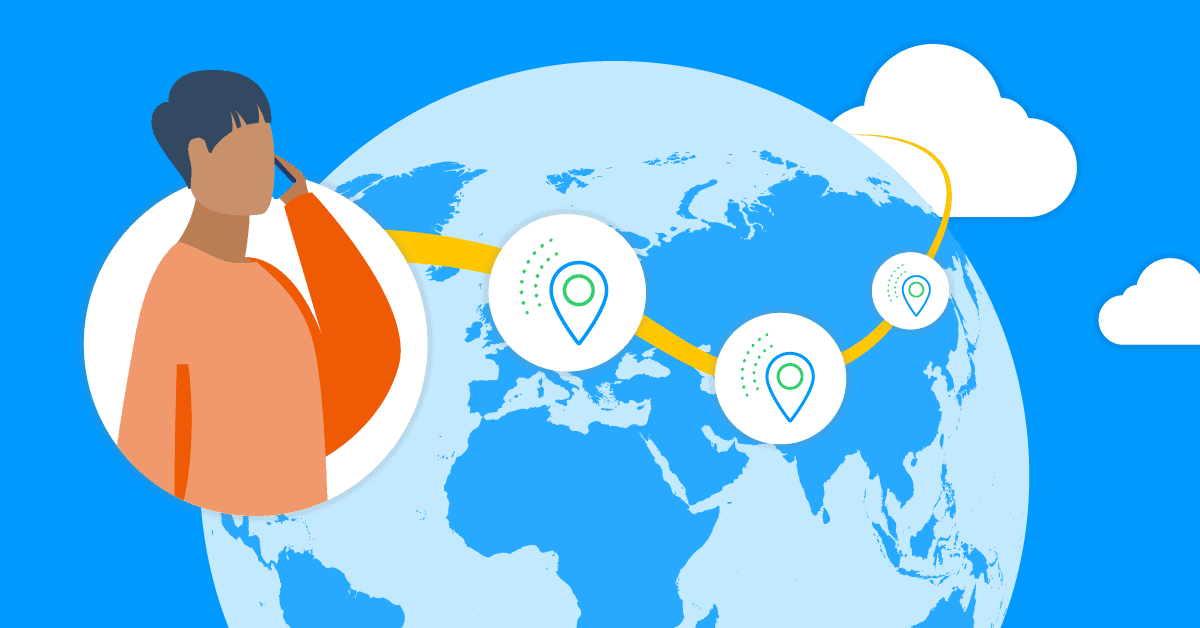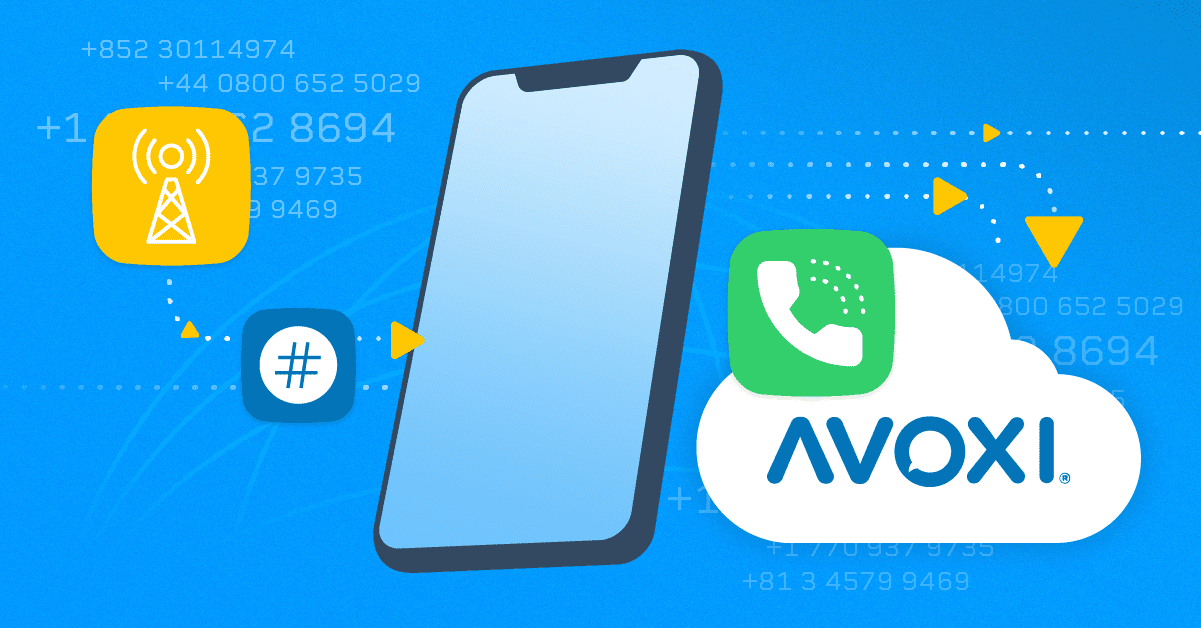Porting US Phone Numbers for Business Efficiency (2025)
When a business switches telecom providers, maintaining uninterrupted phone service and retaining existing phone numbers is crucial to avoid disruption. This critical need is why porting a phone number is essential. Porting ensures continuity across sales lines, support desks, and every customer touchpoint—keeping you constantly connected.
While the concept appears simple, upon closer examination, porting numbers involves many rules and regulations, including documentation requirements, carrier approvals, and federal laws, as well as timelines that often conflict with your operational plans.
For US businesses, Federal Communications Commission (FCC) rules, specific document requirements, and inflexible timelines are part of the process. Successfully managing all the moving parts of this process requires working with a provider that knows how to navigate it. AVOXI, for instance, brings extensive experience, having successfully handled thousands of number ports for large and growing companies.
Dive into the critical aspects of number porting to build confidence in your number transfer, especially when compliance, call flow, and business continuity are at stake.
What is phone number porting and how does it work?
Here’s a quick breakdown of what businesses should know when transferring a number from one service provider to another:
- What is phone number porting? Phone number porting is the process of transferring an existing phone number, including landline, mobile, or Voice over Internet Protocol (VoIP) numbers, from your current carrier to a new provider. The number stays the same, even as the underlying service or system changes.
- How long does the porting process take? Porting timelines vary based on number type and provider cooperation, but number ports typically take 5–15 business days. Toll-free and bulk ports may require additional time for verification and backend setup.
- What are the key steps? Businesses submit a porting request with key details, such as the account number and billing address on file with their current carrier, along with a Letter of Authorization (LOA). The current service provider then validates the request before releasing the number for transfer to the new carrier.
Benefits of phone number porting for businesses
Porting a business phone number is a strategic move that allows for the consolidation of voice providers and offers long-term value far beyond basic convenience. Here are the key advantages:
- Maintain brand recognition: Keep the number customers already know and trust, eliminating the need to reprint materials or inconvenience customers with a new number.
- Ensure communication continuity: Avoid downtime or missed calls during the transition between service providers.
- Reduce administrative hassle: Skip the need to update contact info across websites, ads, email signatures, and directories.
- Preserve marketing investments: Keep numbers tied to the ad campaigns, billboards, and sales funnels that have already generated brand equity.
- Gain full ownership and control: Take complete control of your number under the new provider, freeing yourself from your previous carrier.
Number porting vs. call forwarding
Here’s how porting a number compares to simply forwarding calls from an old number to a new one:
| Number ownership | Fully transferred to the new provider | Remains with the original provider |
| Cost over time | One-time or minimal porting fees | Ongoing forwarding charges may apply |
| Call quality | Direct routing via the new network | Can be impacted by dual-carrier routing |
| Long-term use | Ideal for permanent transitions | Suited for short-term situations |
| Compliance and control | Full account control under the new service | Limited control because it’s tied to the previous account |
While call forwarding offers a faster setup, it’s a temporary patch. Porting ensures full control of your business phone number with your new provider.
What are the regulatory and compliance considerations for number porting?
In the US, the FCC mandates that service providers allow number transfers upon a customer's request, provided the number remains within the same geographic area or is eligible under local number portability (LNP) rules. Businesses must submit valid documentation and account details to confirm ownership and validate the request.
However, exceptions exist. The FCC may not require some rural carriers or VoIP services with non-geographic numbers to port out numbers. And anticipate potential delays or additional verification steps for numbers crossing state lines or transferring between specific networks.
What are the requirements for porting business phone numbers?
Before submitting a porting request, businesses must gather specific information to validate ownership and obtain authorization for the transfer. Here’s what companies typically need:
- Proof of ownership, such as an invoice or service agreement
- Business account information, including the account number, PIN, billing address, and authorized contact
- Letter of Authorization signed by the account holder
- Most recent copy of the phone bill from the current service provider, issued within the last 30–60 days
- List of phone numbers you want to transfer, including any associated features like SMS or voicemail
Additional requirements for multi-line or bulk porting:
- Customer Service Record (CSR) from the current provider
- List of phone numbers for porting, specifying whether it’s a partial or full port
- Internal escalation contact for any service interruption
For international number porting, some regions may require a national ID, tax registration, or corporate licenses. Having these documents ready speeds up the porting process and minimizes the chance of rejection due to mismatches or missing information.
International porting timelines can also vary significantly, ranging from a few days to several weeks, depending on the carrier and region.
How can you tell if your number is portable?
Always check a number’s portability before submitting a request. While not every phone number is portable, most business numbers are eligible if they meet specific geographic and carrier requirements.
Here’s how to find out if a number is portable:
- Check the rate center and location match: The number must stay within the same geographic area or rate center unless it qualifies for non-geographic porting. This is especially important for local and landline numbers.
- Confirm the number type and service compatibility: Some VoIP or virtual numbers may have limitations, particularly when issued by free or legacy providers. Business landlines, toll-free numbers, and mobile lines are generally portable with valid documentation.
- Look out for carrier restrictions: Certain rural carriers or prepaid mobile providers may not participate in number portability or may require additional steps to release the number.
Confirming your number’s portability gives your team time to prepare and gather documents, enabling them to anticipate issues and avoid unexpected service hiccups during the switch.
Step-by-step process for porting business phone numbers
Porting a business number is a multi-step process that requires precision, documentation, and clear communication.
Here’s how it typically works with AVOXI:
- Gather required documents: Collect all necessary materials, including the signed LOA, a copy of a recent bill from your current carrier, account details, and the list of numbers to port. For multi-line or international ports, you may need to submit additional documents.
- Submit your porting request to AVOXI: Once your documents are ready, submit the request through your AVOXI client portal or with the help of your account manager. AVOXI reviews your submission for accuracy and completeness before forwarding it to your current service provider to begin the transfer process.
- Pre-check and validation: AVOXI validates all submitted information against industry databases. If discrepancies are found, like mismatched billing addresses or missing documents, AVOXI will contact you to correct them before proceeding.
- Port request sent to current provider: After validation, AVOXI forwards the request to your current service provider, which will verify account ownership and confirm release of the number(s).
- Approval and firm order commitment (FOC) date assigned: Once your current provider approves the transfer, a porting date is assigned. AVOXI notifies you of the scheduled cutover time and confirms that it’s preparing routing.
- Port activation and number transfer: AVOXI transfers your number to its platform on the agreed date. Most cutovers are seamless, with no disruption to call flows or routing.
- Final testing and confirmation: After activation, AVOXI performs post-port testing to confirm inbound and outbound call quality, voicemail functionality, and SMS routing (if applicable). You’ll receive a final confirmation once everything is live and stable.
Throughout the transfer process, AVOXI provides real-time updates via email and portal notifications, with support standing by to assist in case of delays, escalations, or configuration changes.
What happens after you submit your port request?
Once AVOXI receives your porting request, the team handles all stages of the transfer. Here’s what to expect:
- Within 1–2 business days: AVOXI completes a pre-check for accuracy and completeness and contacts you if any corrections are needed.
- Within 3–5 business days: The request reaches your current carrier for validation and approval. If all goes smoothly, the next step is to schedule an FOC date.
- On the FOC date: Your number ports over, usually during off-peak hours to minimize disruption.
- Post-port: AVOXI monitors call performance and finalizes backend settings to ensure your services are fully operational.
AVOXI’s proactive porting workflow reduces friction, prevents missteps, and keeps your number and your business moving forward—uninterrupted.
Best practices for successful number porting
Without proper planning, even a straightforward porting request can encounter avoidable issues, like call routing errors, downtime, or lost voicemail access.
A few key best practices can help you minimize risk and ensure a smooth, disruption-free transfer:
- Risk mitigation strategies and a pre-porting checklist: Verify and gather all required documents to avoid delays. Review and confirm which numbers and services you want to port to avoid partial porting errors or unintentional service termination.
- Post-porting verification steps to ensure service continuity: Once the number goes live on the new phone system, run test calls to confirm functionality for incoming and outgoing calls, and verify that all core features are working as expected.
- Parallel service and contingency planning for US businesses: Maintain your existing phone service until the port has been confirmed and tested. This overlap minimizes downtime in case of unforeseen issues. Have a fallback plan, such as temporary call forwarding or an alternate contact number, to avoid service interruptions during the cutover.
AVOXI’s porting specialists guide the process, handle validations, monitor the timeline, and resolve issues in real time, allowing businesses to offload the complexity while staying in control of the outcome.
Simplify number porting: Talk to AVOXI today
Porting a business phone number requires attention to detail. Neglecting key details can lead to costly disruptions, missed calls, and wasted time. By following best practices and preparing documentation upfront, you can reduce risk and maintain complete control of your communications throughout the transfer.
For a seamless porting experience, partner with an experienced voice provider like AVOXI. AVOXI offers deep regulatory expertise, provides proactive real-time updates, and delivers hands-on support to manage even the most complex number transfers, ensuring your peace of mind.
Consolidating your phone numbers under one provider isn’t just streamlined, it’s smarter. Reach out to AVOXI for a tailored consultation and discover how number porting can help maintain long-term communication stability and support business growth.
Porting phone numbers: Frequently asked questions
A number may be non-portable due to carrier restrictions, especially with rural or prepaid mobile providers. Other common issues include mismatched account information, unpaid balances, or numbers assigned outside of the porting-eligible rate center.
For bulk ports, stagger the cutover in phases and keep your existing service active alongside the new one until testing is complete. Prepare a detailed list of all numbers you’re moving, and identify critical lines (like support or sales) for priority verification.
Most US business phone numbers port within 5–15 business days, depending on the provider and number type. Toll-free and international ports may take longer due to extra verification steps. The process is faster when all documentation is accurate and there are no holds or outstanding issues with the current carrier.
Most providers charge a one-time fee per number, although pricing can vary depending on volume and number type. Enterprise ports may qualify for discounted or bundled rates.
Additional Resources to Help You Get the Needle Moving

PSTN Replacement
Guide to Voice Termination Services

Retain Phone Number
International
Number Porting

Virtual Phone Line
Benefits of
SIP Trunking

